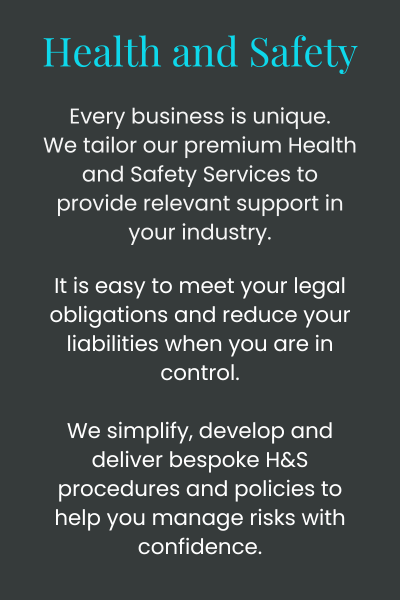Building Regulations – Five (5) statutory instruments published under the Building Safety Act 2022

The Department for Levelling Up, Housing and Communities (DLUHC) recently published five Regulations under the Building Safety Act 2022.
- The Building Regulations etc. (Amendment) (England) Regulations 2023
- The Building Regulations (Higher-Risk Building Procedures) (England) 2023
- The Building (Approved Inspectors etc. and Review of Decisions) (England) Regulations 2023
- The Higher-Risk Buildings (Management of Safety Risks etc) (England) Regulations 2023
- The Building Safety Act 2022 (Consequential Amendments etc.) Regulations 2023
These new regulations, (in place largely due to Dame Judith Hackitt’s report – “Building A Safer Future”), provide details of the new, tougher regimen for the design and construction of higher-risk buildings (HRB’s), the details of the new “in-occupation” safety regime for these buildings, and the wider changes to the building regulations for all buildings.
There are also significant changes to the Regulatory Reform (Fire Safety ) Order 2005 which will affect the way fire risk assessments will need to be managed for all commercial buildings going forward.
The new regimen for those involved in higher-risk building work will mean that they can and will be held accountable for their work. The publication of these Regulations:
- Creates new duty-holder roles and duties;
- Lays out new procedures for the Building Safety Regulator to control work on HRB’s;
- Set out a new regimen for the management of all occupied HRB’s.
Building Safety Act 2022 – Regulations FAQ
The Building Safety Regulator (BSR)
Amendments made to existing legislation means the building safety regulator will be the only building control authority for all higher-risk buildings – local authorities and approved inspectors WILL NO LONGER be able to supervise higher-risk building work.
What is the statutory definition of a High-Risk Building?
As defined in the Higher-Risk Buildings (Descriptions and Supplementary Provisions) Regulations 2023:
- A building in England that is at least 18m in height OR has at least 7 storeys; and
- It contains at least two separate residential units.
Health & Safety Risk Assessment SupportClick HereHow to deal with a serious accident or incident at workClick Here
Previous slide
Next slide
What does this mean for the building design, construction and management of higher risk buildings?
Basically, the way that buildings will be designed, built and then managed will need to ensure the safety of those who live in them.
There will be significant changes to the way ALL building work will be controlled by the new BSR, but a new approach will be taken where blocks of flats, hospitals and care homes – above 18m tall OR more than seven stories are concerned.
What does the new “in-occupation” regimen mean?
The Regulations introduce a new “in-occupation” regimen’. Duty-holders will need to be able to show they proactively engage with residents in regard to building safety (at occupation and then regularly on an annual basis) and be in a position to demonstrate to the BSR that they are managing the building safety risks in their building (specifically for fire spread and structural collapse) appropriately.
What is meant by building work being “commenced”?
The client will be required to notify the Regulator twice – the first being to inform when work is expected to start on site and then again when work has “commenced”.
- The first time should be at least five working days before work begins on a Higher Risk Building site, when the client must notify the Building Safety Regulator (BSR) of the date they intend to start work;
The second is within five working days of the building work starting, when the client, or someone on their behalf, must notify the BSR that the work has actually started or “commenced”.
What is a “complex building”?
Construction of a Higher Risk Building (HRB) will, in many cases, be considered a “complex building”, as will:
- A building constructed on the same shared foundation plinth or podium as any other building or structure;
- A building with more than one storey below ground level; or
- A building where its proposed use is primarily as a public building with capacity for 100 or more visitors.
A “public building” refers to:
- A shop or shopping centre;
- A licensed premises where food or drink are sold for consumption,
including nightclubs, social clubs or dance halls; - A stadium or sports ground,
- A theatre, cinema or concert hall;
- An exhibition hall or conference centre;
- A hospital or premises for the provision of health care.
Change control
Another change will be a statutory “change control process” during construction, which will require robust record-keeping of all documentation, signed off by the Regulator, with more significant changes possibly requiring permission from the BSR to continue. The inclusion of a change control process aims to ensure that:
- The impact of changes is properly considered;
- Compliance with building regulations is owned by those with the legal responsibility to meet them; and
- Accountability of the principal duty holders is maintained throughout the project.
A graduated approach to different types of change (recorded, notifiable and major) aims to prevent:
- Relatively small changes going through unnecessary bureaucracy; and
- More significant changes not receiving sufficient scrutiny.
Submitting building control approval
Where building work in an existing higher-risk building is not going to be carried out under a third-party certification or competent person scheme, or consists of emergency repairs, the applicant will have to submit a building control approval application to the BSR, complete with prescribed documents relevant to the size and scale of the building work being undertaken.
Golden thread, mandatory occurrence reporting and information
Where all High-Risk Buildings are concerned, the client having the building built will be responsible for ensuring information and documents are kept in an electronic format, which will begin and then form the “golden thread” of information from the design stage into the building stage and then onwards.
This flow of information supporting the design and construction of buildings, will allow people to use information to design, construct and refurbish their buildings safely and effectively.
It will also ensure that residents and owners of residential units will be able to have confidence that their homes have been built and/or will be refurbished, safely.

